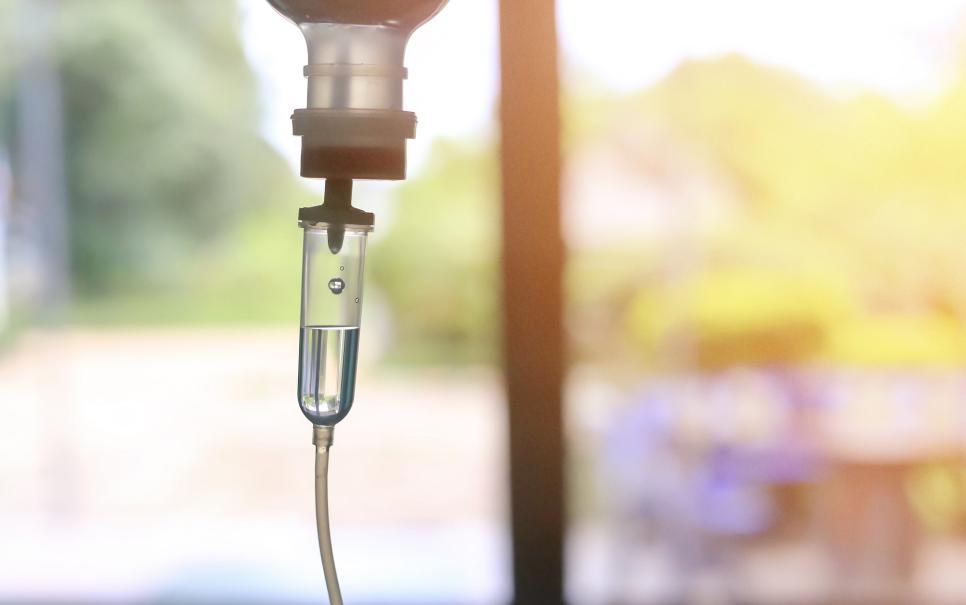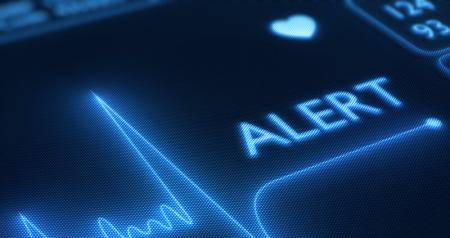Friday, October 24, 2025
Key Takeaways
- Stemaid therapy uses pluripotent stem cells to send powerful signals for repair across the body, not just in one organ.
- It’s the secretome (exosomes, growth factors, epigenetic signals) that drives healing, not simply turning into new cells.
- Although experience at our clinic shows good safety, this approach remains investigational and is not FDA accepted in the U.S.
Stem cell therapy is an innovative and rapidly advancing field that offers a wide range of effective therapies for the treatment of various diseases and injuries. Stem cells are undifferentiated cells that have the ability to signal repair in a wide range of tissues and distinct cell types. The use of stem cells has shown promising results in the treatment of a wide range of diseases such as autoimmune conditions, degenerative conditions, chronic conditions such as heart disease, liver disease, diabetes, macular degeneration, and even in the treatment of severely diseased tissues such as in cancer.
Where do stem cells come from?
Stem cells are obtained from various sources such as bone marrow, umbilical cord blood, fat tissue, and placenta-derived mesenchymal stem cells. Most common source of stem cells for clinical use in the United States are specialized cells from fat tissue and bone marrow transplant or hematopoietic stem cell transplantation. Blood-forming stem cells, also known as hematopoietic stem cells, can differentiate into all types of blood cells, including red blood cells, white blood cells, and platelets. Peripheral blood stem cell transplants are also employed in specialized clinical settings.
Umbilical cord blood is a common source of allogeneic donor stem cells in clinical use. Umbilical cord blood cells are high in concentration of hematopoietic stem cells that can differentiate into all types of blood cells. Cord lining is another source of stem cells that has been shown to have positive effects on functional outcomes. Umbilical cord tissue is rich in reparative and regenerative cells.
At Stemaid Instutite, we focus in stem cell administration of pluripotent stem cells, also called embryonic stem cell. This particular source of stem cells comes from a tissue line grown from the inner cell mass of the blastocyst.
What is stem cell therapy?
A wide range of stem cell types are used in medical treatment all around the world, in clinics, in hospitals. They are harnessed to help the body to self-repair, to self-regenerate. Adult stem cell therapy is the most common in most countries, mainly due to availability and regulation.
Pluripotent stem cells are also now coming to the forefront of full body repair therapeutics. These stem cell types are often called the “miracle cells” because they can signal repair in all 220+ tissue types of the body, and when autologous, they can turn into endogenous stem cells and somatic stem cells to replenish dying cells in diseased organs, including the brain cells. This ability makes them useful in treating essentially all diseases, all types of cells and tissues benefit.
What are the benefits of stem cell therapy?
The therapeutic potential of stem cells is remarkable. The number of cells per injection of each of these distinct cell types and the respective outcomes are highly dependent on the patient's condition and the source of stem cells.
Stem cell therapy has been shown to have positive effects on immune response and immune cells. Stem cells can modulate the immune system by promoting the proliferation of healthy cells and reducing the proliferation of diseased tissues. Stem cell administration can be done through various methods such as intravenous administration, intraarticular injection, and autologous transplant.
Clinical studies have shown that stem cell therapy can have protective effects on the body. Stem cells have been shown to promote the expression of growth factors that can help regenerate damaged tissues and decrease the risk of fibrosis during heart and brain damage. Stem cell therapy has also been shown to have anti-apoptotic effects on neuronal cells, which can prevent the death of mature neurons such as dopaminergic neurons.
The effects of stem cell therapy can be observed even in very hard to treat conditions, such as cancer, lateral sclerosis, and various neurodegenerative conditions. In preclinical studies, stem cell therapy has been shown to be effective in the differentiation of stem cells into neuronal stem cell, which can then be used to replace damaged neurons and neural cells, and all mature cell types in the brain. Stem cell therapy has also been shown to have positive effects on functional outcomes in cancer, including increased levels of healthy cells and decreased levels of cancer cells.
In what settings can we find stem cell therapy?
Stem cell therapy has been used in a variety of settings, including stem cell clinics and health professional offices. Stem cell treatment is highly personalized and is based on the patient's medical history, disease severity, and source of stem cells. Protocols for stem cell processing and cell transplantation are highly regulated by national institutes of health and regulatory bodies of each country.
What are the different types of stem cells used in stem cell therapy?
There are two main types of stem cells used in medical therapy:
-
multipotent stem cells, also called mesenchymal stem cells, adult stem cells
Adult stem cells are obtained from various tissues such as bone marrow, adipose tissue, placental tissue, umbilical tissue.
Sources of stem cells for adult stem cell therapy vary. Effective treatment has been reported with the use of adipose-derived stem cells, bone-marrow stem cells, hematopoietic stem cells, placental stem cells, umbilical stem cells, fetal stem cells. These are all mesenchymal stem cells and the stem cell pool from each source contains specialized cell types that all differ in regenerative potential. Multipotent stem cells are best suited for signaling repair in 6-8 tissue types of the body, the cartilage, the tendons, the ligaments, the bones, the skin and a few more.
-
pluripotent stem cells, embryonic stem cells
The embryonic stem cell is the youngest stem cell type being used in medicine now. It is known for its unmatched regenerative capacity. It gives rise to all 3 germ layers of the body, and is therefore capable of signaling repair and regeneration in all 220+ tissue types of the body.
Embryonic stem cell research shows that it's not the high proliferative capacity nor the high differentiation capacity that is of key importance in pluripotent stem cell regenerative therapy. Any stem cell doctor will concur that it's not important in clinical medicine that they have potent cell proliferation potential or that they can turn into neural stem cells, cardiac stem cells, or blood vessel cells or any cell type or cell population. That is key for research, but in clinical environments it's the unique secretome, what the stem cells secrete, that matters for tissue repair.
The signaling profile of pluripotent embryonic stem cells is very unique and specifically positioned to repair DNA damage, to elongate telomeres, to stimulate the tissue to grow new blood vessels and nerve cells, to dissolve scarring and allow the tissue to become more supple and elastic as young healthy tissue is. Epigenetic reprogramming of tissue back to a healthy metabolic profile is what embryonic stem cells do best. Due to this unique action, the therapeutic potential of embryonic stem cells is vast. Any tissue can benefit, at any stage of injury.
Where do the embryonic pluripotent stem cells from?
Embryonic stem cells come from a tissue line grown from the inner cell mass of the blastocyst. 5 days after fertilization, the embryo layers split into the inner cell mass and the outer cell mass. The outer cell mass produces the placenta. The inner cell mass contains all the information to grow and repair all tissues of the body. If you grow a stem cell line from the inner cell mass layer, it cannot create a body, but it contains the regenerative information for all 220+ tissue types of the body. This is why embryonic stem cells are so comprehensive in their tissue reach and repair.
Are embryonic stem cells the same as fetal stem cells?
No, they are very different. Fetal stem cells are much older than embryonic and already differentiated. They are multipotent. Fetal stem cells fall in the #1 category, mesenchymal stem cells. multipotent stem cells. They do not have the regenerative reach nor the unique signaling profile of pluripotency. It's a very different type of stem cell.
Why use pluripotent stem cells?
The pluripotent embryonic stem cells are by far the most comprehensive and have have powerful regenerative potential. They are capable of epigenetic reprogramming in all organs, repair damage in every tissue type, since they have the most comprehensive signaling profile for all cell types in the body. David Sinclair and his team at Harvard have backed this up with research, showing that regular pulsing doses of pluripotent signaling factors from embryonic stem cells are the key to reprogramming tissue to a younger metabolic and biological age. They have even restored sight in aged mice. If you can restore tissue and organs to a younger biological age, they can better repair and regenerate.
How do pluripotent stem cells repair the tissues and organs?
The therapeutic potential of pluripotent stem cells is mainly due to their potent paracrine effectors, exosomes, that signal repair in tissues and awaken the dormant tissue specific stem cells. Pluripotent stem cells release potent epigenetic reprogramming factors such as Yamanaka factors, NANOG. These take your 65 year old heart and turn back the clock on that tissue, allowing it to beat at healthier 36 year old level.
Analysis of the content of pluripotent secretome reveals presence of proteins, peptides, growth factors, systemic factors that repair nerve damage (neurotrophic factors, especially important in neurological disorders), that grow more blood vessels in the areas (angiogenic) , autophagy-related proteins that clear senescence (senolytic), telomore longating factors, DNA repair factors, collagen and elastin supporting factors and so on. Anything that helps the tissue to bounce back to healthy state seems so be pumped out from these unique cell types.
What are the beneficial effects?
Essential function of pluripotent stem cells is to repair and regenerate. Any damage, any injury, any disease (including degenerative diseases, neurodegenerative diseases, cardiovascular disease, liver disease, retinal disease) can benefit from the repair and regenerative potential of this cell type. Their neuroprotective effects go unmatched.
Patient results vary, depending on condition and overall vitality. We have had patients improve in heart function, liver function, cognitive function, in digestion, in pain reduction of chronic pain or joint pain, in energy levels and overall vitality. We have seen patients heal from lyme and cancer, the beneficial effects are vast. View our patient testimonials for more about this.
Are there any adverse effects?
Pluripotent embryonic stem cells are safe when administered by trained medical staff and sourced from a high-caliber reputable laboratory. Our clinic has seen no serious adverse events in over a decade of pluripotent stem cell therapy.
The only risk during administration of IVs we have found in over 15 years of clinical experience is mild hypoglycemia upon administration. Each intravenous administration of pluripotent stem cells contains 20 million cells per injection. This is a high dose treatment. This potent and concentrated dose of the pluripotent stem cells requires glucose for physiological activity. We mitigate this risk by making sure patients have had a meal before injection and are well hydrated.

How is stem cell therapy administered?
The stem cells secrete a powerful reparative, regenerative and rejuvenate cocktail into every tissue of the body. This is the reason why we administer the Pluripotent stem cells intravenously, and locally via direct injection, so that they can travel into every tissue of the body. Administration for stem cell therapy varies patient to patient, but we mainly employ intravenous administration, intramuscular and intraarticular injection approaches.
Can the body reject stem cells?
Essential function of allogenic stem cells is to scan the tissue and release a reparative secretome. Once they have done this, they are cleared by the immune system within 24-48 hours. If you receive our autologous stem cell transplant, these cells remain in the body, replenish the depleted stem cell pool, and continue to signal repair long term. Graft versus host disease is not something we see with pluripotent stem cell therapy.
Why go to Cabo, Mexico to get stem cell therapy?
Cabo is a wonderful place to combine travel & relaxation with physical & emotional healing. Cabo's natural beauty is breathtaking. Its people are warm-hearted and fun-loving. The food is healthy, streets are safe and businesses open and welcoming.
Biological regenerative medicine, like pluripotent stem cell therapeutics, requires favorable regulatory and legal conditions to thrive and innovate. Mexico has a visionary government, its laws permitting and not prohibiting leading-edge human stem cell therapeutics, human stem cell research and international medical and stem cell tourism. Also, the cost of high quality medical care in Mexico is often times less expensive.
Our Stemaid Institute in Cabo is a very special place. It's the only clinic in the world where you can receive pluripotent stem cells and pluripotent exosomes in your wellness protocols. The clinic is beautiful, the staff are attentive, the doctors and nurses deeply caring. Healing here is very pleasant and peaceful.
FAQs
What makes pluripotent stem cells different from adult stem cells?
Pluripotent stem cells can influence repair across all tissue types via their secreted signaling molecules, while adult (multipotent) stem cells are more limited to specific tissues. Their broader “reach” is what we harness for whole‑body regenerative care.
How do you actually deliver these stem cells to the body?
We use a mix of methods like IV infusions and local injections depending on the area and condition. That way, signals can reach deep tissues as well as targeted zones.
Are there risks associated with this therapy?
Based on our experience, the main issue has been mild hypoglycemia during IV treatments, so we make sure patients eat before sessions. As always, every treatment carries risks and we do a full evaluation beforehand.
Is this therapy approved by the FDA in the U.S.?
No, our stem cell protocols are not FDA approved in the U.S. We practice under a regulated clinic environment in Mexico and emphasize full discussion of benefits and risks.
References
1. Introduction to Stem Cell Therapy
2. Risk factors in the development of stem cell therapy - Journal of Translational Medicine
3. Embryonic stem cell lines from human blastocysts: somatic differentiation in vitro - PubMed
4. Stem cells, pluripotency and nuclear reprogramming
5. Induction of pluripotent stem cells from adult human fibroblasts by defined factors - PubMed
6. Embryonic stem cell lines derived from human blastocysts - PubMed











